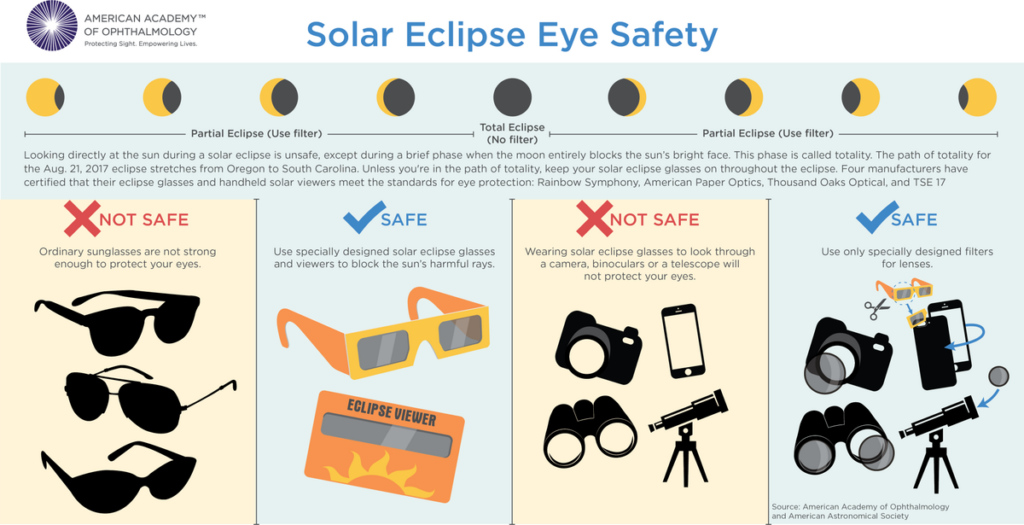As the eagerly anticipated solar eclipse occurs on April 8, 2024, excitement fills the air for this rare celestial event. While witnessing a solar eclipse can be breathtaking, it’s essential to be aware of the potential health implications associated with viewing the event.
One of the most significant concerns during a solar eclipse is the risk of eye damage from direct viewing of the sun. Staring at the sun, even during an eclipse, can cause solar retinopathy, a condition where the sun’s rays damage the retina, leading to vision loss or impairment. The danger lies in the intense light emitted by the sun, which can overwhelm the eye’s natural defenses and cause permanent damage.
Precautions for Safe Viewing:
To protect your eyes while viewing the solar eclipse, follow these precautions:
- Use Proper Eye Protection: The only safe way to view a solar eclipse directly is through special-purpose solar filters or eclipse glasses that meet international safety standards (ISO 12312-2). Regular sunglasses, homemade filters, or improvised viewing methods are not safe and should not be used.
- Limit Exposure Time: Even when using proper eye protection, it’s advisable to limit direct viewing of the sun during the eclipse to brief intervals to minimize the risk of eye strain and fatigue.
- Seek Shade: Consider viewing the eclipse indirectly or using projection methods to observe the event safely. This involves creating a pinhole projector or using binoculars or a telescope with solar filters to project an image of the eclipse onto a surface.
- Educate Others: Share information about safe viewing practices with friends, family, and community members to ensure everyone can enjoy the eclipse without risking their eye health.
If you should experience discomfort or vision problems following the eclipse, walk in or schedule an appointment for a comprehensive eye examination with Hold My Spot.
Sources:
Science.nasa.gov, American Academy of Opthalmology, American Optometric Association, AAPOS.org, Exploratorium.edu
